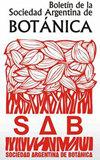Determinación de la eficiencia de la micropropagación de genotipos de mandioca (Manihot esculenta, Euphorbiaceae) de interés para el Nordeste Argentino.
IF 0.7
4区 生物学
Q4 PLANT SCIENCES
Boletin De La Sociedad Argentina De Botanica
Pub Date : 2017-09-29
DOI:10.31055/1851.2372.v52.n3.18029
引用次数: 0
Abstract
Micropropagation efficiency determination of cassava (Manihot esculenta, Euphorbiaceae) genotypes of interest to the Northeast of Argentina. In vitro cassava propagation has been reported in numerous studies; however, the efficiency of multiplication had only been established in a very restricted number of cultivars and / or subcultures during micropropagation. In order to evaluate the in vitro multiplication of 20 economically important cassava cultivars of Northeast Argentina (six total subcultures performed every 30 days), uninodal segments were cultured in basal Murashige and Skoog (1962) supplemented with 0.01 mg/L of 1-naphthaleneacetic acid, 0.01 mg/L of 6-benzylaminopurine and 0.1 mg/L gibberellic acid. Plant regeneration was possible in 100% of the cultivars during the 6 subcultures. Regardless of the subculture, the average number of nodes regenerated per explant varied significantly among cultivar from two to five nodes per plants (P?0,0001). The average number of accumulated nodes was significantly different among cultivars with values that ranged from 46 to 16,568 nodes per plants (P?0,0001). Results show variability due to genotype, distinguishing three cultivars groups according to their propagation efficiency and growth in length ability. Determining the multiplication rate of different cassava cultivars is essential for optimizing micropropagation.对阿根廷东北部木薯(Manihot esculenta,大戟科)基因型快繁殖效率的测定。
阿根廷东北部木薯(Manihot esculenta, Euphorbiaceae)基因型微繁效率测定。许多研究报道了木薯的体外繁殖;然而,繁殖效率仅在非常有限的品种和/或继代培养中建立。为了评价阿根廷东北部20个重要经济木薯品种(每30 d进行6次传代)的离体增殖,在基础Murashige和Skoog(1962)培养基中添加0.01 mg/L的1-萘乙酸、0.01 mg/L的6-苄基氨基嘌氨酸和0.1 mg/L的赤霉素酸,培养单节段。在6次传代培养中,100%的品种都能再生植株。无论继代培养如何,每个外植体再生的平均节点数在不同品种间差异显著,从2到5个节点不等(P?0,0001)。不同品种的平均累积节数在46 ~ 16568节/株之间存在显著差异(P < 0.01)。结果表明,品种间存在基因型差异,根据繁殖效率和生长长度能力区分出3个品种群。确定不同木薯品种的繁殖率是优化木薯微繁的关键。
本文章由计算机程序翻译,如有差异,请以英文原文为准。
求助全文
约1分钟内获得全文
求助全文
来源期刊

Boletin De La Sociedad Argentina De Botanica
PLANT SCIENCES-
CiteScore
1.00
自引率
33.30%
发文量
46
审稿时长
>12 weeks
期刊介绍:
Bol. Soc. Argent. Bot. publishes original scientific works from the whole spectrum of Plant Biology (structure, anatomy, development, physiology, cytology, genetics, evolution, ecology, paleobotany, palynology, ethnobotany, etc.) in the diverse vegetable organisms and related groups (mycology, ficology, lichenology, briology, etc.), both in basic and applied aspects.
Taxonomic works (of systematics, phylogeny, monographs, revisions, lectotypifications, nomenclatural acts, descriptions of taxa), phytogeographic and phytosociological works (survey and classification of vegetation at different spatial scales and without restriction of methodological approaches) are considered for publication. Contributions that address complete phytogeographic units or sub-units and those that fill gaps in knowledge of vegetation in little-known territories are especially welcome. Extensions of geographical areas are published only when it comes to new citations for a country. Checklists and lists of annotated plants are not published.
Articles submitted for publication must be original and must not have been submitted to another publisher or previously published (print or electronic format). Submissions of papers already published in another language will not be accepted (autoplagio for translation).
 求助内容:
求助内容: 应助结果提醒方式:
应助结果提醒方式:


